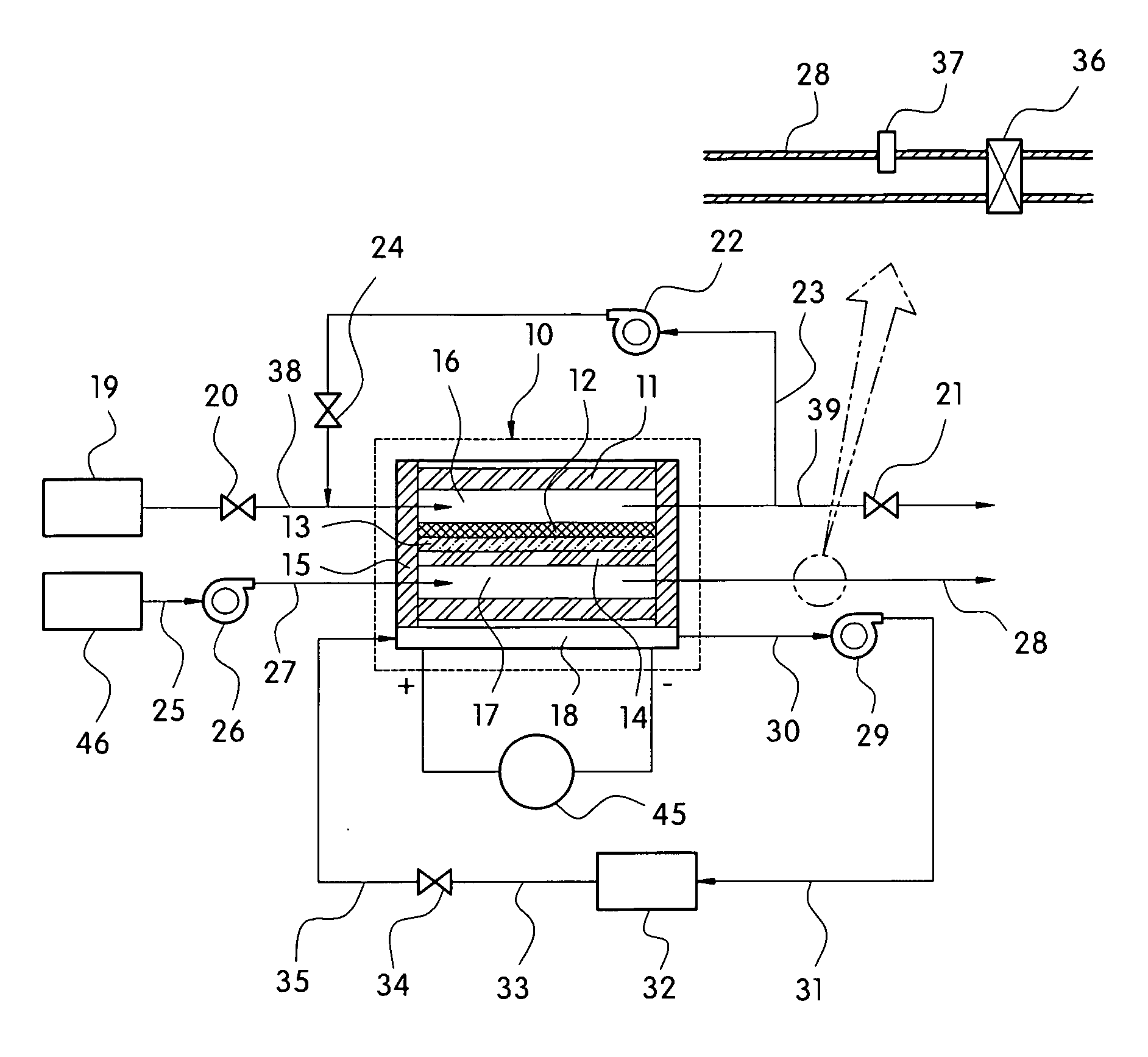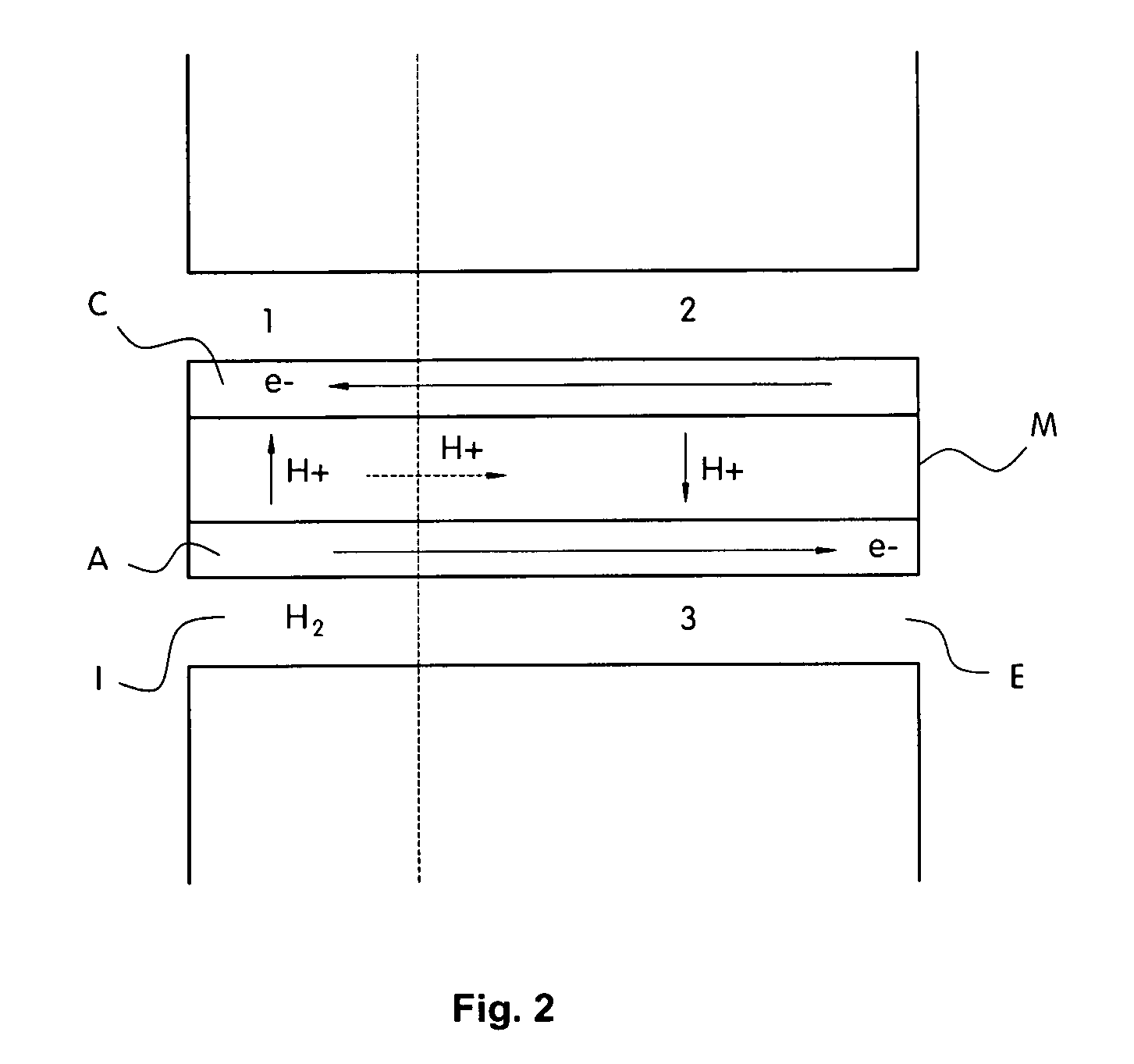Apparatus for preventing carbon corrosion at cathod in fuel cell
a fuel cell and cathode technology, applied in the direction of functional valve types, electrical generators, transportation and packaging, etc., can solve the problems of increasing the layout of additional devices, increasing the cost of additional devices, so as to prevent carbon corrosion and effectively prevent the corrosion of carbon materials
- Summary
- Abstract
- Description
- Claims
- Application Information
AI Technical Summary
Benefits of technology
Problems solved by technology
Method used
Image
Examples
Embodiment Construction
[0069]Reference will now be made in detail to the preferred embodiment of the present invention, examples of which are illustrated in the drawings attached hereinafter, wherein like reference numerals refer to like elements throughout. The embodiments are described below so as to explain the present invention by referring to FIGS. 3-7.
[0070]As discussed above, the prior art has the following problems: 1) complicated structure (resistance, hydrogen burner in hydrogen recirculation line, nitrogen tank, etc.); 2) excessive time required by the complicated startup / shutdown process; 3) degradation of durability performance due to air flowing into the anode during startup / shutdown by employing an additional device; and 4) degradation of durability performance due to fuel cell pollutants by the hydrogen exhaust and air exhaust exposed to the air.
[0071]For example, the moisture in the fuel cell may be evaporated under dry atmospheric conditions and the humidifying water of an MEA is evapora...
PUM
 Login to View More
Login to View More Abstract
Description
Claims
Application Information
 Login to View More
Login to View More - R&D
- Intellectual Property
- Life Sciences
- Materials
- Tech Scout
- Unparalleled Data Quality
- Higher Quality Content
- 60% Fewer Hallucinations
Browse by: Latest US Patents, China's latest patents, Technical Efficacy Thesaurus, Application Domain, Technology Topic, Popular Technical Reports.
© 2025 PatSnap. All rights reserved.Legal|Privacy policy|Modern Slavery Act Transparency Statement|Sitemap|About US| Contact US: help@patsnap.com



